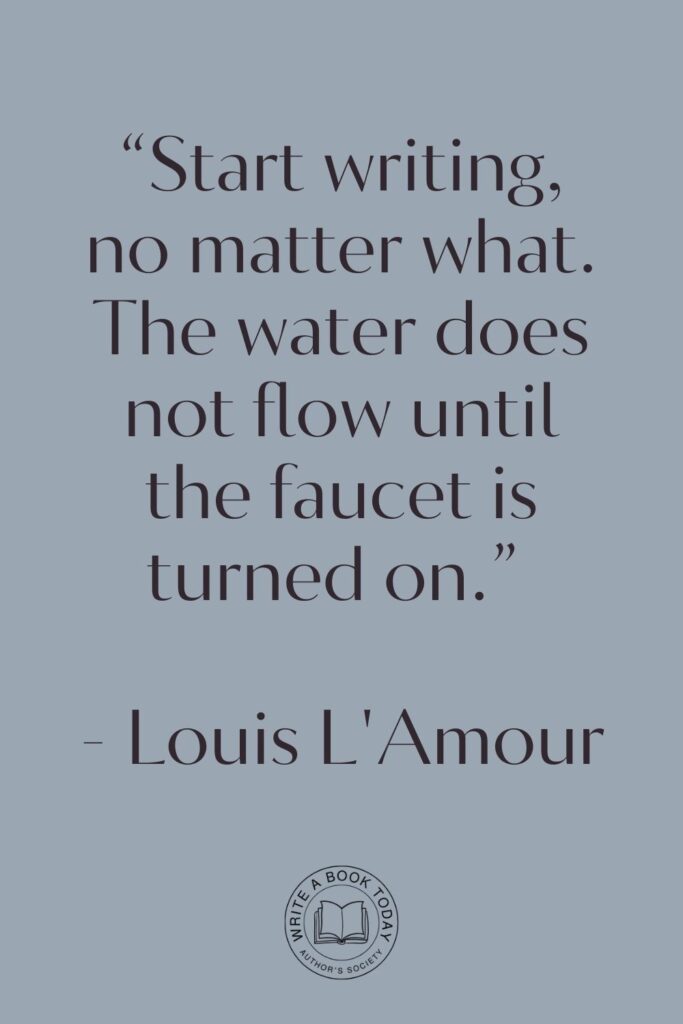Imagine pouring your heart into writing a novel, only to realise that the fate of your literary masterpiece hinges on a single page.
This is the daunting reality of crafting a book synopsis, a crucial element that can make or break your journey to publication.
But fear not! Like a skilled artist, you can sculpt a synopsis that will not only impress literary agents but also leave them yearning for more.
Understanding the Book Synopsis
Before you embark on the journey of writing a book synopsis, it is essential to grasp its true nature and purpose.
Much like a compass guiding a ship, the synopsis serves as a navigational tool for agents, offering a glimpse into the world you have created.
What is a Book Synopsis?
A book synopsis is a concise yet comprehensive summary of your story. It is typically one to two pages long and written in the third person, present tense.
Unlike a blurb, which teases readers, a synopsis reveals the full narrative arc, including major plot twists and the ending.
It encapsulates the essence of your novel, highlighting the main characters, pivotal events, and the emotional journey within.
When crafting your synopsis, remember to keep it professional and focused.
Avoid overly descriptive language or unnecessary details that might distract from the core story.
Your goal is to provide a clear and compelling overview that entices agents to read your manuscript.
Feeling lost with your debut novel?
Fiverr Pro connects you with expert editors, designers, and marketers – everything you need to get your book ready for success!

Purpose of a Book Synopsis
The primary purpose of a book synopsis is to demonstrate the viability of your story to literary agents.
It acts as a litmus test, allowing them to gauge the potential of your manuscript without reading the entire work.
A well-crafted synopsis showcases your ability to tell a cohesive and engaging story while also highlighting the unique elements that set your book apart from others in the market.
In essence, the synopsis is your opportunity to convince agents that your story is worth their time and investment.
It should convey the emotional depth of your characters, the intricacies of your plot, and the overarching themes that resonate with readers.
Key Components of a Compelling Synopsis
Crafting a synopsis that captures an agent’s heart requires a careful balance of elements.
Each component plays a vital role in painting a vivid picture of your story, much like the brushstrokes of a masterpiece.

Identifying the Main Characters
Your synopsis should introduce the main characters early on, providing a brief but impactful description of their roles and motivations.
Highlight their unique traits and relationships, as these are the driving forces behind the plot.
By doing so, you give agents a sense of the characters’ depth and complexity, enticing them to delve deeper into your narrative.
Consider the following table as a guide for character introduction:
| Character Name | Role | Motivation |
|---|---|---|
| Emily | Protagonist | Seeking redemption for past mistakes |
| Marcus | Antagonist | Driven by revenge |
When introducing characters in your synopsis, use bold or capital letters for their names upon first mention.
This helps them stand out and ensures agents can easily identify the key players in your story.
Plot Summary and Structure
The plot summary is the backbone of your synopsis. It should outline the major events and turning points in your story, providing a clear trajectory from beginning to end.
Focus on the cause-and-effect relationships between events, ensuring a logical flow that guides the reader through your narrative.
- Begin with the inciting incident that sets the story in motion.
- Highlight key developments that build tension and propel the plot forward.
- Conclude with the climax and resolution, revealing the outcome of the story.
Avoid getting bogged down in subplots or minor details. Instead, concentrate on the main plotline and its impact on the characters.
This will help maintain a concise and engaging synopsis.
Character Development and Arcs
In addition to outlining the plot, your synopsis should convey the emotional journey of your characters.
Highlight their growth and transformation, illustrating how the events of the story shape their development.
This adds depth to your synopsis, allowing agents to connect with your characters on a personal level.
Emphasise the internal conflicts and dilemmas faced by your characters, as these are often the driving forces behind their actions.
By showcasing their struggles and triumphs, you create a rich tapestry of emotion that resonates with readers.
Crafting Your Synopsis
With a clear understanding of the key components, it’s time to embark on the journey of crafting a synopsis that will leave a lasting impression on agents.
Approach this task with the same creativity and dedication that you poured into your manuscript.

Step-by-Step Guide to Writing a Synopsis
Writing a synopsis can be a daunting task, but breaking it down into manageable steps can help ease the process.
Follow this step-by-step guide to create a compelling synopsis:
- Outline Your Plot: Begin by mapping out the major events and turning points in your story. Identify the key moments that define your narrative arc.
- Summarise Each Section: Divide your story into sections and write a brief summary for each one. Focus on the main plotline and its impact on the characters.
- Introduce Characters and Motivations: Clearly introduce your main characters and their motivations. Highlight their unique traits and relationships.
- Emphasise Character Arcs: Illustrate the emotional journey of your characters, showcasing their growth and transformation.
- Refine and Edit: Review your synopsis for clarity and coherence. Ensure that it flows logically and engages the reader from start to finish.
When editing your synopsis, seek feedback from trusted peers or writing groups.
Fresh perspectives can help identify areas for improvement and ensure your synopsis effectively captures the essence of your story.
Common Mistakes to Avoid
As you embark on the task of writing a book synopsis, be mindful of common pitfalls that can undermine your efforts.
Avoid these mistakes to ensure your synopsis stands out:
- Overloading with Details: Resist the urge to include every subplot and minor character. Focus on the main plotline and essential elements.
- Using Vague Language: Be specific and concise in your descriptions. Avoid vague or abstract language that may confuse readers.
- Neglecting Character Development: Ensure that your synopsis conveys the emotional journey of your characters, highlighting their growth and transformation.
- Failing to Reveal the Ending: While it may seem counterintuitive, agents need to know how your story concludes. Include the resolution to demonstrate a complete narrative arc.
Optimising Your Synopsis for Agents
Once you have crafted a compelling synopsis, the next step is to optimise it for submission to agents.
This involves paying attention to formatting, language, and tone to ensure your synopsis meets industry standards.
Google Docs is for notes. Scrivener is for novels. Upgrade your writing game and try it for free today!

Formatting and Length Requirements
Adhering to formatting guidelines is crucial when submitting your synopsis to agents. While specific requirements may vary, the following general guidelines apply:
- Length: Aim for a synopsis of one to two pages, approximately 500-800 words.
- Font and Spacing: Use a standard font such as Times New Roman or Arial, with a font size of 12. Single-space your paragraphs and use double spacing between them.
- Header: Include your contact information at the top of the page, along with the title of your book and the word “Synopsis.”
By adhering to these formatting guidelines, you demonstrate professionalism and make it easier for agents to review your synopsis.
Using Effective Language and Tone
The language and tone of your synopsis should reflect the style of your book.
While it is important to maintain a professional and concise tone, don’t be afraid to infuse your unique voice into the synopsis.
This can help convey the essence of your story and captivate the reader’s attention.
Use active and engaging language to bring your synopsis to life. Avoid overly complex sentences or jargon that may detract from the clarity of your message.
Instead, focus on conveying the key elements of your story in a compelling and accessible manner.

Final Touches and Feedback
As you near the completion of your synopsis, take the time to add the finishing touches and seek valuable feedback from trusted sources.
This final stage is crucial in ensuring your synopsis is polished and ready for submission.
Editing Your Synopsis
Editing is a vital step in the synopsis-writing process. Review your synopsis with a critical eye, paying attention to grammar, punctuation, and overall coherence.
Ensure that your synopsis flows smoothly and effectively conveys the essence of your story.
Consider enlisting the help of professional editing software or services to catch any errors you may have missed.
A well-edited synopsis demonstrates attention to detail and professionalism, qualities that agents value in prospective authors.
Getting Feedback from Peers
Seeking feedback from fellow writers or writing groups can provide valuable insights and perspectives on your synopsis.
Share your synopsis with trusted peers and ask for constructive criticism.
Consider their feedback and make any necessary revisions to enhance the clarity and impact of your synopsis.
Remember, feedback is a valuable tool for growth and improvement. Embrace the opportunity to learn from others and refine your synopsis to its fullest potential.
No marketing platform? No social following? No problem!
Publisher Rocket helps you market your debut novel like a pro.
It’s a gamechanger for debut authors – try it today!


Conclusion: Your Path to Success
Crafting a book synopsis that captures an agent’s heart is no small feat, but with dedication and attention to detail, you can create a compelling overview of your story.
Remember, the synopsis is your opportunity to showcase the brilliance of your manuscript and entice agents to delve deeper into your narrative.
Staying Motivated in Your Writing Journey
As you embark on the path to publication, it is essential to stay motivated and committed to your writing journey.
Remember that every rejection is an opportunity to learn and grow as a writer. Keep honing your craft, seeking feedback, and refining your synopsis until it shines.
Embracing the Learning Process
Writing is a continuous learning process, and each step brings you closer to achieving your goals.
Embrace the challenges and setbacks as opportunities for growth and improvement.
With perseverance and determination, you can navigate the complexities of the publishing world and ultimately capture an agent’s heart with your compelling book synopsis.








